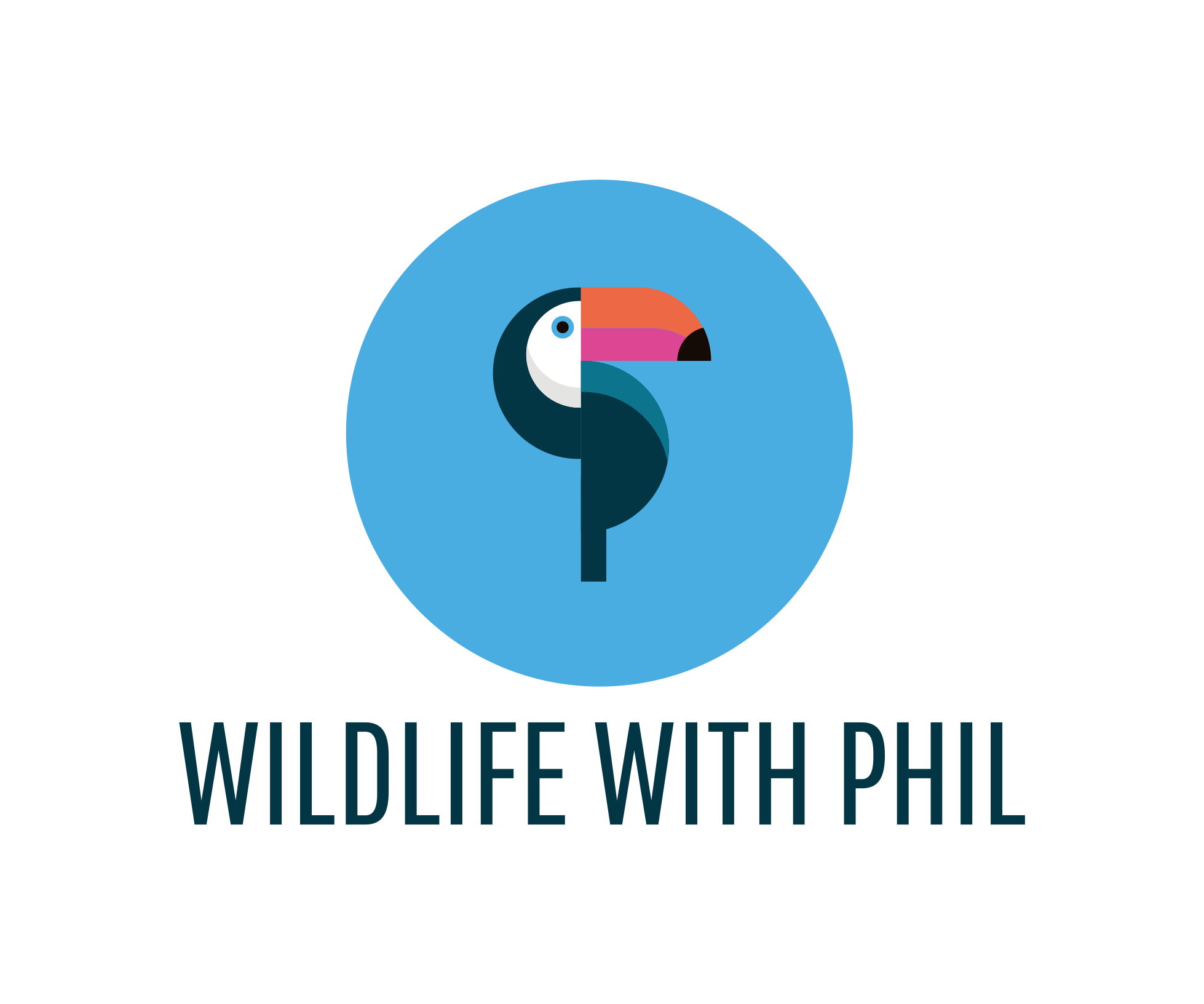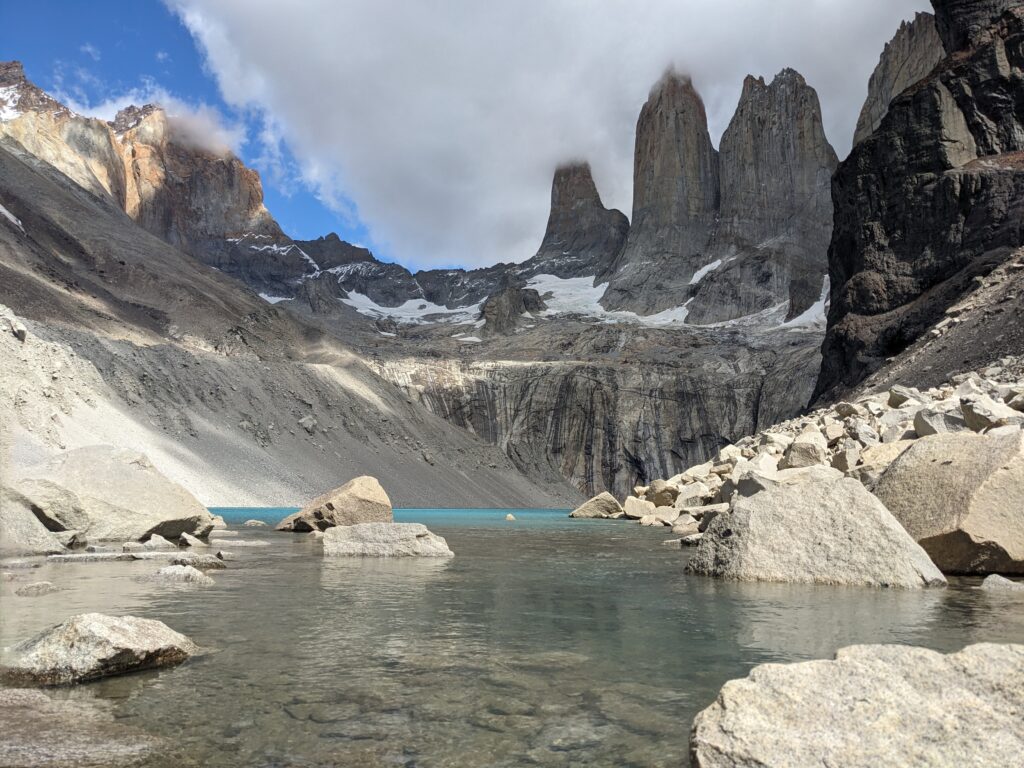
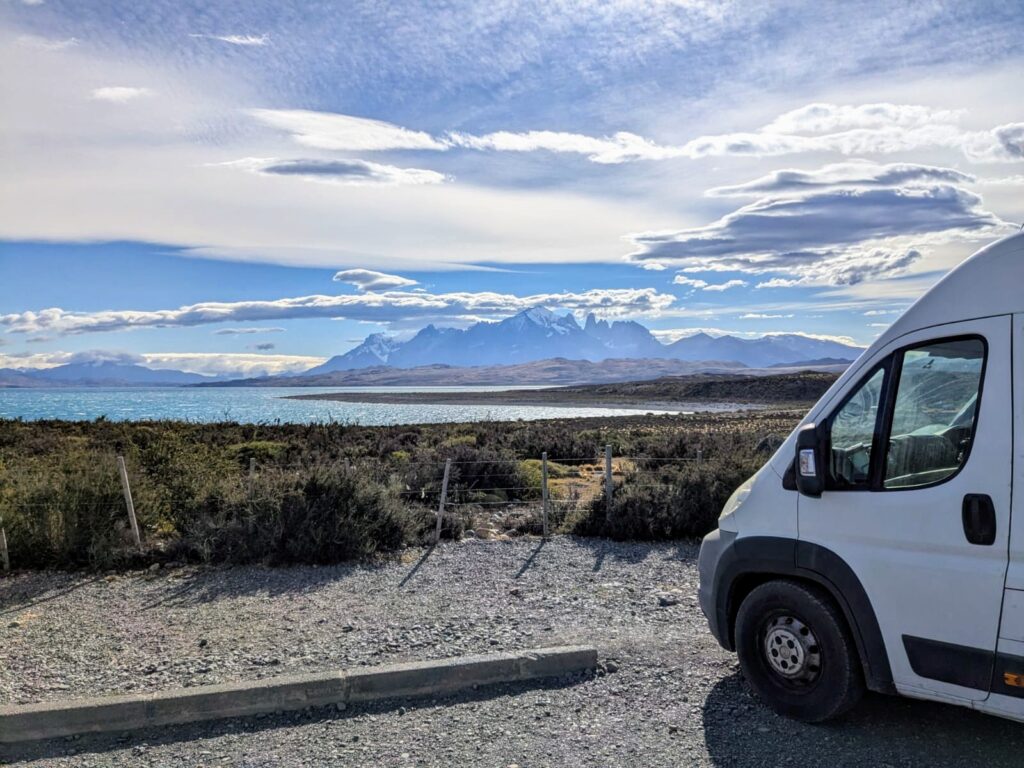
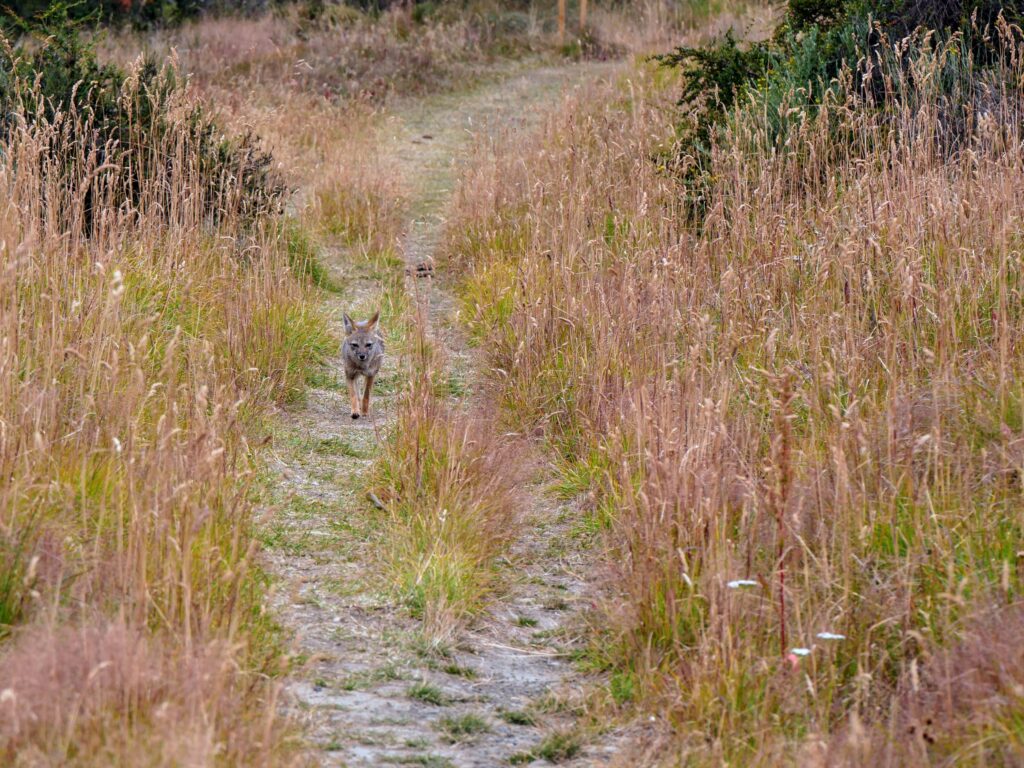
Torres del Paine, Chile’s iconic and one of it’s most visited national park, is the antithesis of the off the beaten track locations that we typically prefer. However, we still felt that it was probably a must-visit due to potential for spotting the elusive puma – Torres del Paine has the highest population density of pumas anywhere in the world. Additionally, we fancied seeing the famous Torres and blue lagoon, that we had seen so many photos of, for ourselves.
We arrived at the foothills just outside Torres del Paine National Park late one afternoon in early February and parked up at the viewpoint or Mirador of the gorgeous azure blue Sarmiento Lake. From our park-up we could see snow-capped mountains and even the Torres themselves.
We spent a windy but mostly peaceful night by the lake and got up early with the plan of beating the crowds to the start-point of the park’s most popular day hike up to Laguna Torre. We got a bit waylaid, however, as on the way we spotted a group of people pulled over on the side of the road with their scopes and binoculars pointed somewhere into the scrub – they had seen a family of pumas!
Unfortunately, we had arrived just 5 minutes too late, and it seemed that the pumas had either moved on or settled down and gone to sleep in the dense scrub. We chatted with a friendly guide who showed us the photo he’d just taken and told us a little about this family of pumas. The family comprised a mum and her two fully-grown cubs that really should’ve left home by now! He commented that these cubs are continuing to rely on their mum to hunt for them, and that the cubs are most commonly seen frolicking in the grass. After chatting with the guide for a while and hanging around in case they made a reappearance, we headed to the park entrance. By this point the tour buses were out in their droves!
Laguna Torre hike
Arriving at the entrance to the national park, we paid for a three day pass ($32,400 Chilean pesos) and took the 7 km gravel road to the trail-head and car park where we began the hike to Laguna Torre. There were a lot, and I mean a LOT, of people on the trail. At one point we had to wait over 15 minutes to cross a footbridge as it only had the capacity to hold two people at once!
We hiked quickly in an attempt to find quieter sections of the trail. Due to some sections of the trail being very narrow, this only really worked once we passed by the campsite, Camping Chileno, when the trail became a lot quieter and a lot more pleasant.
The scenery was beautiful as we climbed steeply through lenga forest, along valley edges and then out onto the bare rock shortly before Laguna Torre. Upon reaching the lagoon, there were quite a few people already enjoying the view. However, we were still able to find our own spot to take the classic photos of the lagoon and Torres in the background. The sun was out and the lagoon was a beautiful celestial blue. We even enjoyed a spot of sunbathing on a suitably flat rock as we were pretty tired after powering to the top!
Heading down we were grateful for having overtaken so many people, as there were hoards of people now on the second half of the trail. It was actually quite tricky to safely pass them all, especially on the steeper sections. Overall, the hike is pretty steep and strenuous, and we were really quite fatigued by the time we arrived back at the trail-head. We checked out the wonderfully stocked souvenir shop (we could have bought everything in there!) and then headed back to the same park-up by Sarmiento Lake for another night.
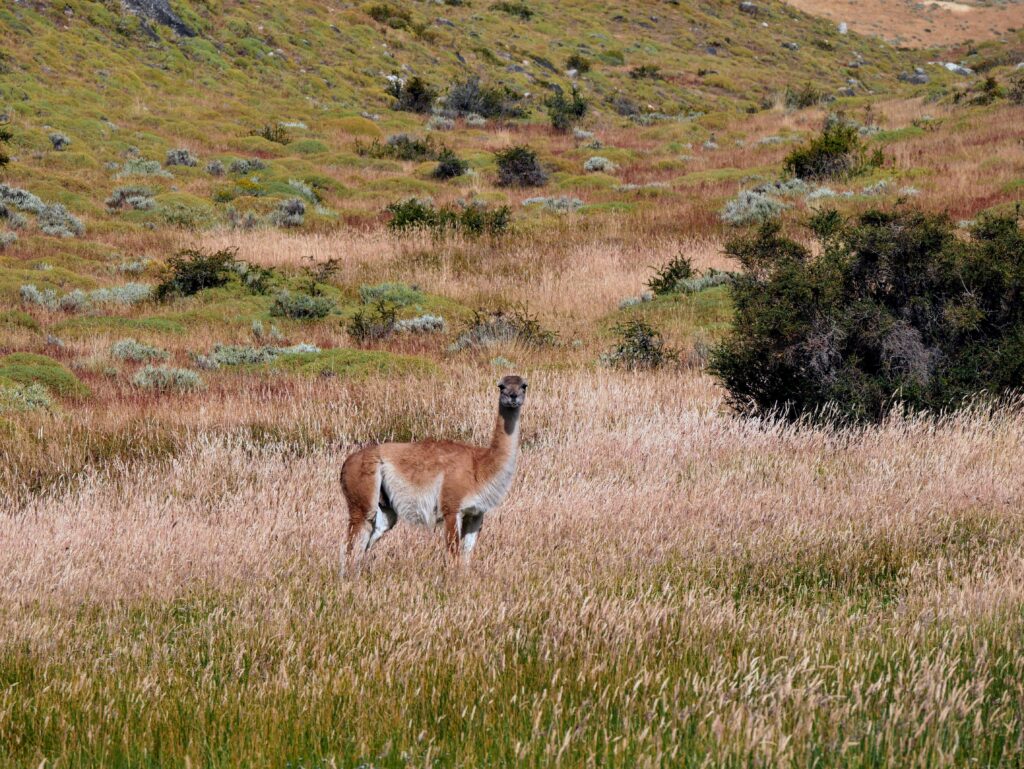
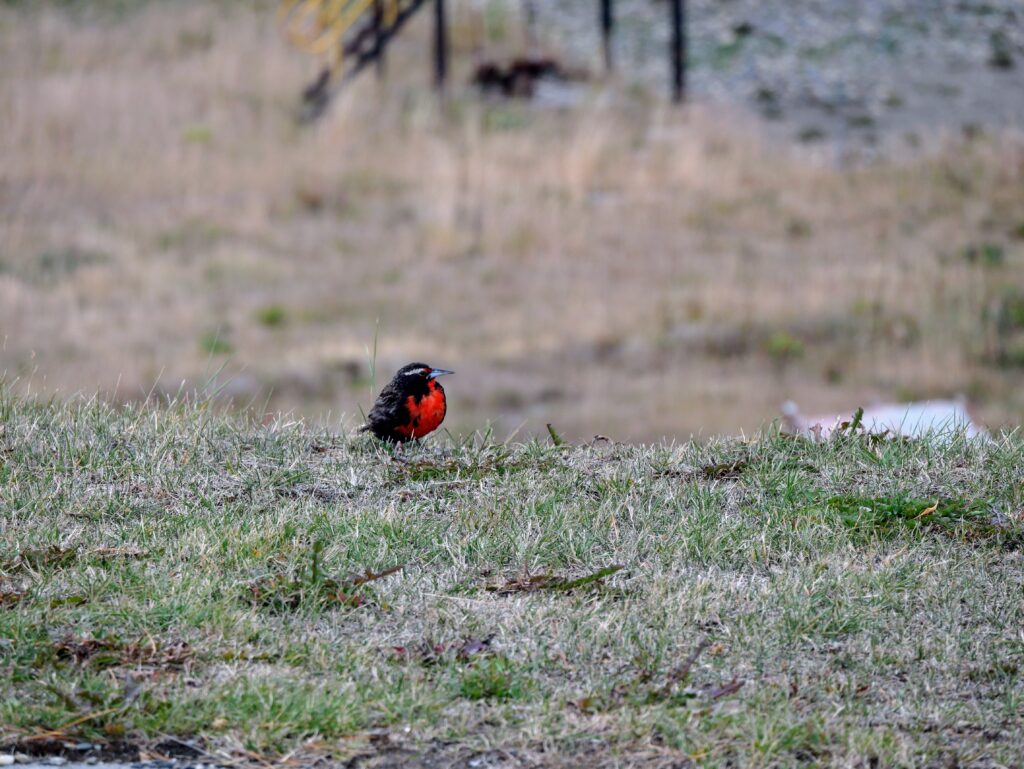
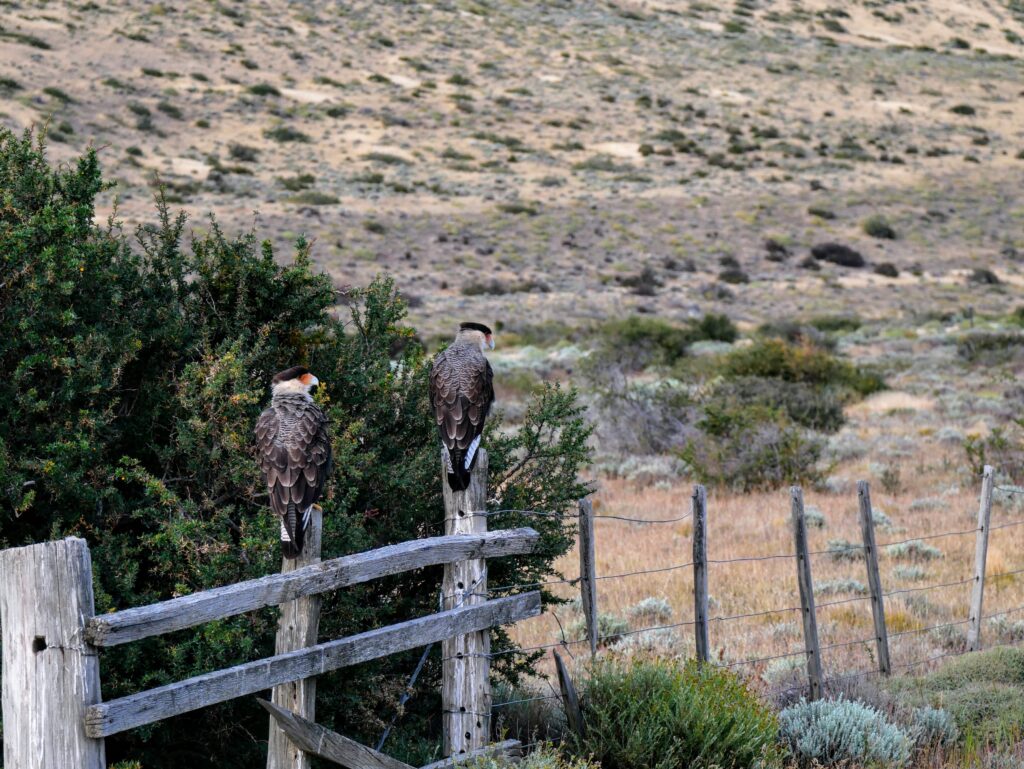
Self-drive puma safari!
The next morning we were up early again and headed to the same place where pumas were spotted the day before. Sadly they were not there, but we were starting to formulate a plan of how to best our chances of seeing these beautiful animals. We decided to run our own self-drive puma safari! Leg one of the safari involved driving very slowly along Ruta Y-160, which runs through excellent puma habitat, to Laguna Azul. Again, no pumas for us yet, but we arrived a the lagoon and were happy to see that there were just a handful of other visitors in this part of the national park.
We were also happy to see some black-faced ibises, upland geese and Chiloé wigeon hanging out by the lagoon. After parking up, we went for a walk around the edge of the water and were lucky to see a South American grey fox and a majestic Andean condor soaring above us. It flew so close to us that we could hear the incredible hum of the wind on it’s wings, it was like a small plane flying overhead! We spent the night beside the lagoon (with permission from the very reluctant ranger stationed there!) and rose early again to continue our safari.
Again, we drove slowly along the road back towards the main park entrance, watching carefully for pumas. We actually saw a couple of other groups of people doing the same thing as us! There were a few guanacos en route but sadly, we again didn’t spot any pumas ourselves. But as we neared the national park entrance, we saw a couple of tour buses pulled over on the side of the road. We found a spot to join them and asked them what they had seen. They told us that the puma cubs from the other day, were resting in the scrub on the hillside within the estancia opposite! The guides said they were sleeping as they had already eaten this morning, and therefore they may not move for a long while.
We decided to stick it out and waited for over 3 hours, scanning the hillside with our binoculars. We were almost ready to give up as almost all the other tour groups had already left, but then, finally – a glimpse of a puma! It was one of the male cubs. He sat up, stretched and moved to sit in the sun. A little later, the other cub appeared from a nearby bush and headed up the hillside. They were very far away (hence the terrible photo!) but it was magical to see them all the same.
As we watched them through our binoculars, more guides turned up to ask if the puma family was there. It felt good to pass on some information about the puma’s whereabouts to the guides after we had used their location to help us find them in the first instance. Of course, if our budget were higher, we would have absolutely hired a guide for the day in order to hugely improve our chances of seeing pumas up close.
Summary
We enjoyed our time in and around Torres del Paine. The main hikes inside the park were really too busy for our liking, but the scenery is beautiful and we felt incredibly lucky to have seen pumas.
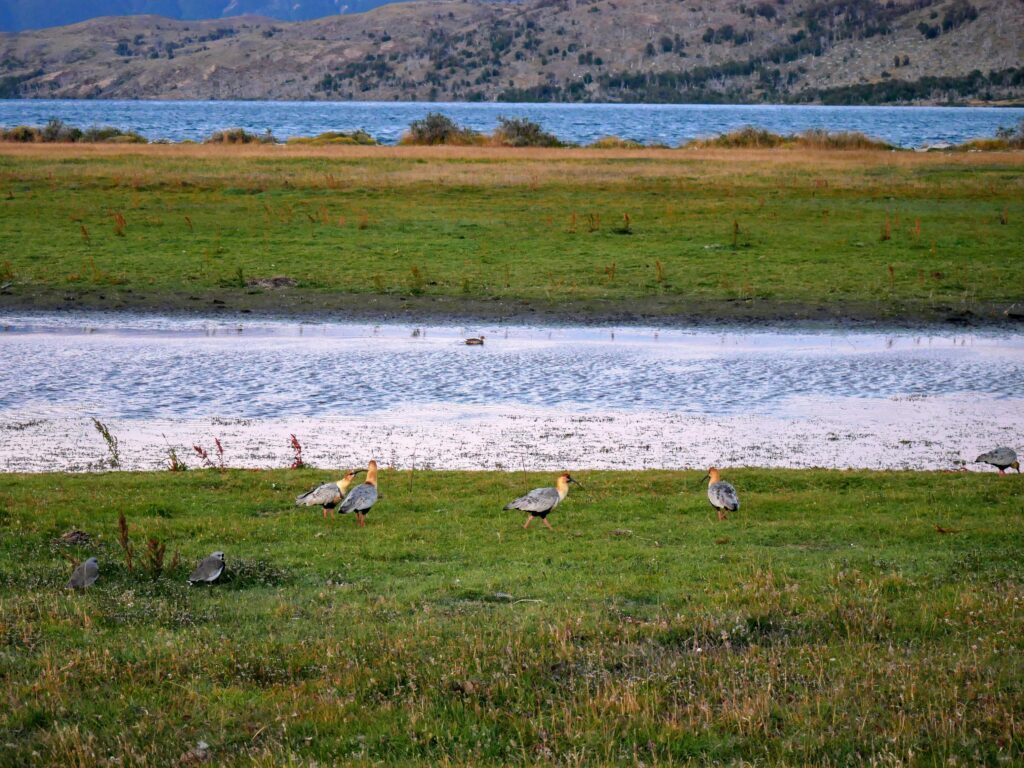
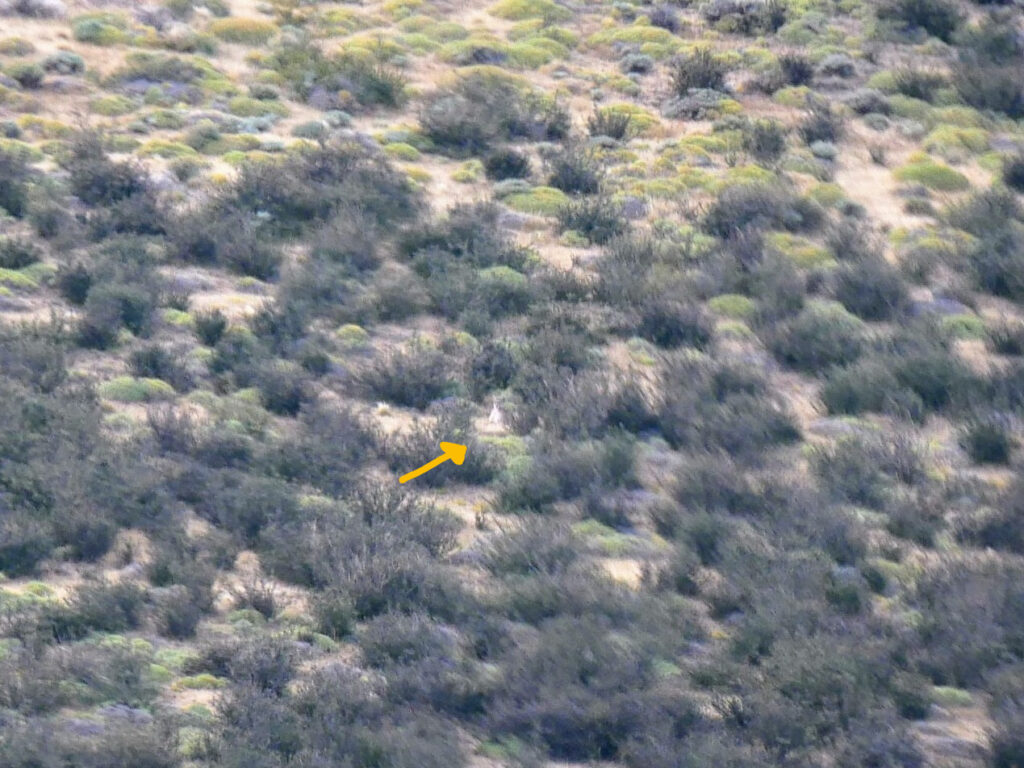
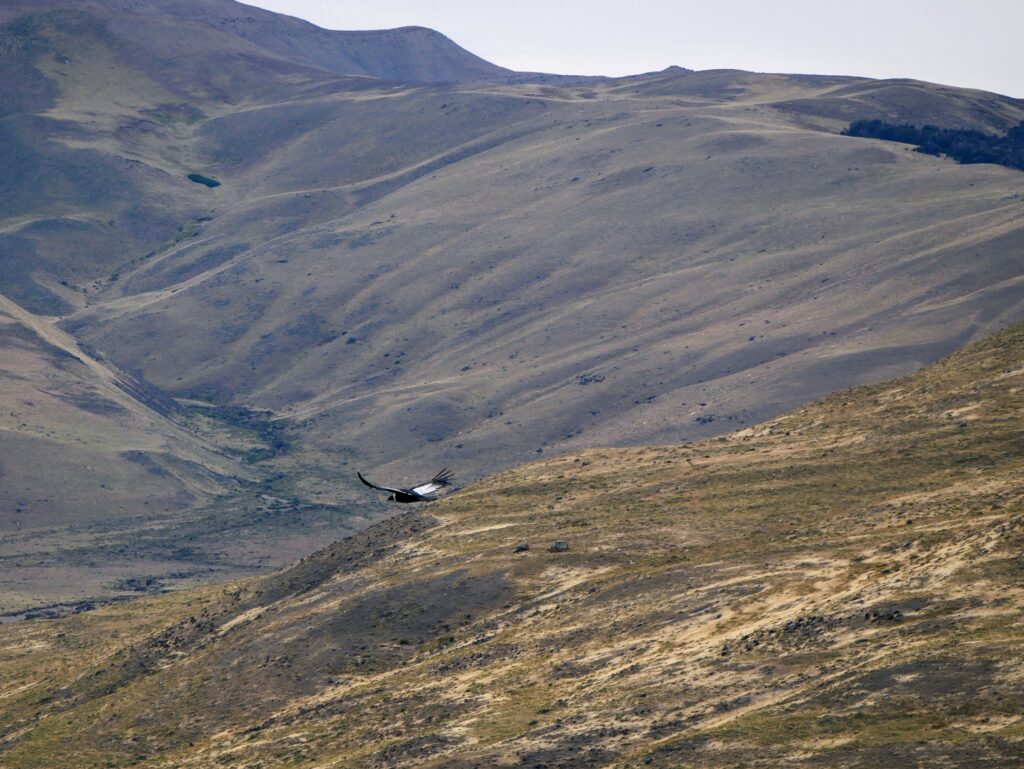
How to get there
There are two main entrances into Torres del Paine National Park – Laguna Amarga and Serrano. Both are accessible by car or bus from Puerto Natales along Ruta 9 and Ruta Y-290 respectively1. There are also many different tour companies that will take you to different parts of the park and offer a range of trekking or wildlife spotting packages.
When to visit
It is possible to visit Torres del Paine at any time of year, with each season offering unique benefits and compromises. Winter can get very cold and snowy however, leading to some trails closing. The busiest time to visit is during the summer months of December through February.
